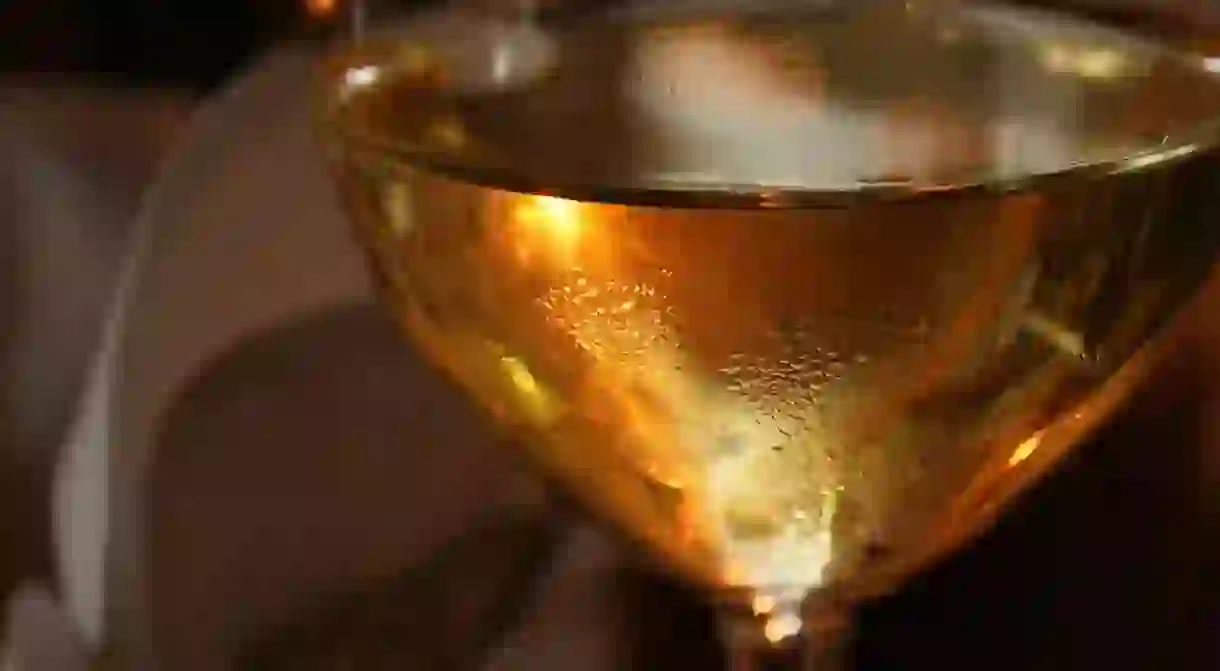Orange Wine Is a Thing Now (Because Why Not?)

Red, white and rosé – those are the three colours of wine, right? Wrong. Not even taking into consideration some of the crazier ways wine can be coloured – blue wine anyone? – it turns out that orange wine is very much a thing in the wine-making world. What’s more, even though orange wine has been named the wine trend of 2017, it’s actually been around for centuries.
What even is orange wine?
Let’s start with a little basic wine science. Wine generally gets its colour from the skins of the grapes it is made with and depending on how long those skins stay in contact with the pressed ‘grape juice’ (we won’t get too technical here).
Red wine is generally made by crushing red grapes and leaving the skins in contact with the juice anywhere between a few hours to a hundred days or so. White wine is most often made with white grapes and the skins are removed immediately after crushing, or it can be made with red grapes which are crushed very lightly and great care is taken to avoid contact with the skins (these wines are usually called blanc de noir).

Based on this, you might have guessed that rosé wine is usually made by crushing red grapes and leaving the skin in contact for a really short period of time, just enough for them to give a nice pink hue to the liquid. Skins also give tannins, so that can be a factor in how long the skins are left in contact with both red and rosé wines.
So where does orange wine come in? Let’s rewind to white wine production and ask ourselves what might happen if we left the white grape skins in contact with the juice after crushing it. You got it. Orange wine.
Surely this is just another crazy fad?
Not quite. Granted, orange wine is very much the ‘in-thing’ of the wine-drinking world this year, but it’s actually been around for centuries and was even shunned for being ‘incorrect’ by the more prestigious French wine-makers back in the fifties.
The idea of leaving the skins of white grapes in contact with the fermenting grape juice – just as you do with red wine – is hardly a radical idea. Especially if you think that this has been going on since well before wine-making became so regimented and scientific.

The Eurasian country Georgia has been making wine for at least 5,000 years and many experts believe that this might be the oldest recorded production of orange wine. The Georgians use a special ceramic vessel known as a qvevri (‘kev-ree’) to ferment their wine underground, leavings skins to macerate with the juice until the pot was deterred and the wine decanted.
There are also records of orange wines being made centuries ago in northern Italy and Slovenia, especially in the Friuli-Venezia Giulia region. Although when the market demand grew for ‘fresh’ white wines, many local producers shunned these ancient methods to produce clear white wines.

So what does orange wine taste like?
Asking what an orange wine tastes like is just like asking what a red or white wine tastes like. The answer is that it really depends on a variety of factors, including the type of grapes used, the terroir and the way the wine is fermented.
That said, based on what we said previously about what skins give to wine, it’s safe to say that orange wines are generally much more tannic than traditional white wines. This makes them good for pairing with certain foods typically associated with red wines like fatty meats – pork would be a good example.
They generally have a more robust feel to them than white wines and are generally quite big and round. They can also have a certain sourness to them, but again this very much depends on how they are made.

What’s the verdict on them?
Orange wines are still relatively controversial in the world of wine, with some people complaining they’re just a fad and nothing more than a white wine gone wrong. Others see them as a breath of fresh air, opening up exciting new possibilities and reviving what is in fact a well-established wine-making method.
Across Europe, Australia, South Africa and the US, wine producers have been experimenting with orange wine and have come up with some interesting results. In the US, wines such as The Prince in His Caves from the Scholium Project (California) or the ‘SK’ series by Red Hook Winery (New York) have been praised by wine critics. In Europe, La Stoppa winery in Italy and the Domaine Gauby in France are just some examples of the more well-received orange wines.

In fact, some of the best restaurants in Europe are working with orange wines on their wine lists. Sommeliers that like to work with so-called natural wines – low sulphites, low intervention wines – are generally fond of orange wines too, which tend to adhere to similar principles.
The easiest way to make your mind up is to try one for yourself. While orange wine might not, yet, be available in every supermarket and corner store, more and more specialist wine shops stock a few bottles. Keep an open mind, don’t bring too many expectations and don’t be put off if you don’t like the first one you try – there’s a lot of variety. Cheers!













